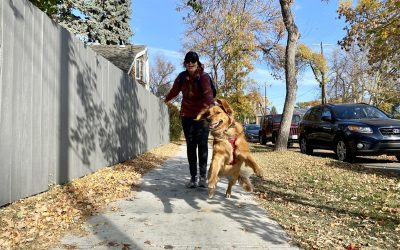We ran a poll on our Instagram account asking “Have you ever had to deal with a medical emergency with your pet?”
53% of people voted yes they had.
That number makes sense since 61% of Canadians (from a 2016 survey) own a pet. That’s a lot of people and pets, something is bound to happen!
We thought April would be a good time to shed some light on why Pet First Aid is so important to us, so we’ve made a list of 5 things you may not have thought about when it comes to Pet First Aid as a Pet Parent.
1. Prevention
Prevention is KEY!
It’s safer for your pet, and better for your wallet if you take the steps to prevent an emergency before it happens.
Take a quick look around you, and start with considering these:
Poisons – Ensuring all chemicals/foods that are toxic to animals are stored ‘out of reach’ and correctly. (Sounds simple, but the number one cause of pet poisonings is human error) How many times has your pet got into something they’re not meant to? What if they got in under the kitchen sink?
Environment – Consider when and where it is safe to walk your pup off-leash. If your dog is known to roam, it may not be a good idea to let them do so in a porcupine active area. Is your dog reactive? Does your dog have good recall? Does your dog like to eat everything they see outside?
Disease – It’s important to maintain annual check-ups with your vet, as well as reporting any health/behavioural changes.
2. Safety
Your safety needs to come first when it comes to responding to a pet emergency. If a dog is hit by a car on a busy street or has been electrocuted from chewing through a power cord, you will need to ensure you are safe to help before assisting the animal. This could mean finding someone to help to stop traffic and move the injured animal, turning off the power to your home or taking other safety precautions.
3. Call the Vet
If you are rushing a pet to the vet with a life-threatening injury, call ahead to inform them. This gives the clinic time to prep for your arrival and save vital minutes that could be spent on helping your pet.
4. Emergency numbers
When dealing with a pet emergency you are not always thinking clearly.
Save your Vet’s number and an Emergency Vet in your phone. Make sure to add “Vet” somewhere in the contact-You can direct someone to search your contacts quickly.
Make sure you leave those same numbers in an easy to remember place (like on the fridge) for a pet sitter or family member.
If you are traveling with your dog research where the emergency vet is, and save those numbers while you are on your trip.
5. First Aid Kits.
We believe you should have at least three pet first aid kits!
1. In your home
2. In your car
3. With you, when you are out with your pet.
Your ability to help a pet is as good as the location of your first aid kit. If your dog is injured 30 minutes (or further) from your car and that’s where your pet first aid kit is, how helpful will it be? Keeping a small one on you could save precious minutes and increase the chance of recovery/survival of your pet.
We hope this quick guide helped put a little focus on your pet’s well-being in ways that you may not have considered before. As pet parents we were so inspired by taking the Walks ‘N Wags Pet First Aid Course, we made it our goal to become certified instructors of the course. And since becoming certified instructors, it is not only our goal but also our duty to educate as many people as we can on these potentially life-saving practices on behalf of our pets! They’re family too!
To sign up for our next Walks ‘N’ Wags Pet First Aid course click here




